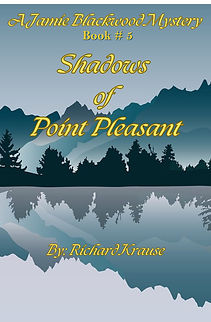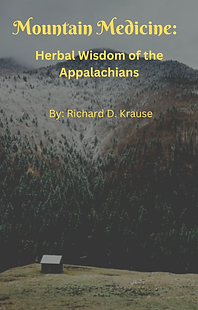A Ruby is a Ruby or is it??????
- Richard Krause
- Oct 12, 2018
- 8 min read
Good morning all you wonderful folk out there in Internet land. I am happy to say that the sun is shining here in good old South West Florida and the coffee is hot and strong. I am also pleased to report that this particular old curmudgeon is starting to feel more like his crumpy old self. The old lungs are starting to clear up and I actually feel almost human again.
Today I think I will discuss my birthstone:
The Ruby
Rubies are the most valuable members of the corundum family. Large gem-quality rubies can be more valuable than comparably sized diamonds and are certainly rarer. There is a relative abundance of smaller, 1-3 carat blue sapphires compared to the scarcity of even small gem-quality rubies. As a result, even these smaller stones are relatively high in value. Anna Miller and John Sinkankas in their work, Standard Catalog of Gem Values, 2nd. Ed., list a wide range of wholesale prices for faceted gem rubies. Prices are dependent on origin, color, size, and clarity: from a low of $100 to $15,000/ct. Myanmar or Burmese stones in ½ to 1 carat sizes with slightly purplish red color and light inclusions range from $300 to $3,000/ct., for example. The price survey done by the International Gem Society reports that clean, top-color gems in the ½ to 1 carat size range are being sold at retail with a range of $1,000-$3,000/ct. The vast majority of rubies are “native cut” in their country of origin. High-value ruby rough is tightly controlled and rarely makes its way to custom cutters. Occasionally, such native stones are recut to custom proportions, albeit at a loss of weight and diameter. Custom cut and recut stones are usually more per carat.
Ruby is red corundum. The color comes from traces of chromium. All other color varieties of corundum are referred to as sapphire. Depending on the chromium and iron content, rubies have a color range that includes pinkish, purplish, orangey, and brownish reds. The trace mineral content tends to vary with the location of the geologic formation which produced the ruby. This is why terms like “Burmese” (Myanmar) or “Thai” (Thailand) are sometimes used to describe the color of stones from those locations. (However, color is not always an indication of origin).
There is an old joke about questionable stones: whether it’s a ruby or a pink sapphire depends on whether you’re the buyer or the seller. Most authorities expect a medium to medium dark-red color tone in a ruby. Stones lighter than this are called pink sapphire. However, there is no general agreement on how to draw the line between rubies and sapphires.
Few other gems have as much myth, lore, and romance surrounding them as rubies. One of their chief attractions is the alleged protection from misfortune and bad health they were believed to afford their lucky owners. As the science of gemology developed, many historically important rubies, such as the famed Black Prince’s Ruby of the British crown jewels, were determined to be other red gems, most often red spinels.
While high-quality ruby is usually faceted for jewelry, ruby rough of lower quality is used in great quantities to make beads, carvings, and other ornamental objects.
Overall colors can often, but not always, offer a clue to a ruby’s origin. Stones from Myanmar (formerly Burma) tend to have purplish red colors. Thai stones tend to appear more brownish red. Rubies fluoresce in long or short wave ultraviolet light. This property can also often be used to help identify a stone’s geographic origin. Myanmar rubies often fluoresce so strongly that the effect is noticeable even in sunlight. They literally seem to glow and are greatly admired. Thai stones generally lack this property.
Rubies as well as sapphires can display asterism or the “star effect” due to rutile inclusions in a ruby’s hexagonal crystal matrix. If this rutile is sufficiently abundant and precisely arranged, proper cabochon cutting can create star rubies. Today there are heating and diffusion processes that can increase the rutile content and improve such gems.
Inclusions can also help identify the source of a ruby.
Corundum gemstones, both rubies and sapphires, were first synthesized in the early 1900s by a simple flame fusion process. Many jewelers and gemologists have had the unpleasant task of telling the proud inheritors of their grandmothers’ treasured ruby rings or brooches that they contain flame fusion stones with more sentimental than commercial value.
More complex synthesis processes have been developed in recent years. These simulate natural formation conditions so closely that colors and even inclusions look extremely natural. Such stones are difficult for all but the most highly skilled professionals to identify as synthetic.
Rubies have a long history of enhancement. Unless the seller specifically states the stone is unheated, you should assume that some kind of heat treatment has been used. Usually high temperature heating and controlled cooling is done to clarify the stones. This process dissolves silk (rutile inclusions) and can also improve tone and saturation of color. Such treatments can only be detected in stones whose residual inclusions show signs of heat stress. Truly clean stones will give no clues and cannot be verified as natural color.
The general view at present seems to be that simple heating, being stable and indistinguishable from nature’s own heating processes, is acceptable as long as it is disclosed. For this reason, heating doesn’t radically lower the value of ruby gems. This is not the case for other more recently invented treatments, such as diffusion coloring or filling with polymer and/or lead glass.
Although Asia has historically been the major producer of ruby gems, there are many other sources including the United States, Australia, and most recently Africa. Origin definitely affects the value of rubies.
Stones from Myanmar generally command the highest prices. They have the coveted, near perfect coloring known as “pigeon blood red,” which is a very slightly purplish red with vivid saturation and dark tone. They also have extreme red fluorescence. A mining tract in the Mogok region is the primary source of gem quality rubies. This fabled deposit has been known for over 1,000 years. Its home to some of the finest rubies ever found. The color of Mogok rubies often occurs in rich patches and swirls. (Color zoning can occur occasionally). Mogok rubies hold color in virtually any lighting condition, which contributes to the demand for these gem-quality stones. The shape of Mogok ruby rough generally yields well-proportioned stones. In addition to faceted stones, Mogok also produces the world’s finest star rubies.
In the late 1990s, gem quality rubies began appearing in much more abundance from the Möng Hsu region of Myanmar. The rubies from Möng Hsu are a rich, fluorescent red and are easily distinguished by their dark core. These gems were often treated at very high temperatures to enhance their color. While conventional heat treatment is an accepted practice in the trade, the level of heat applied to Möng Hsu rubies in order to enhance their color led to some controversy in the industry. Concerns were raised not only regarding heat treatment more generally but also over whether rubies from Möng Hsu should be distinguished from other Myanmar rubies. There’s still no agreement amongst the trade on this matter.
Rubies have started to come out of Nanyazeik in Myanmar’s Kachin State. It’s too soon to tell if Nanyazeik will become an important source.
Some of the world’s finest rubies have come from Sri Lanka’s gem gravels. Top-grade Sri Lankan reds are virtually indistinguishable from their Mogok brethren, but most tend towards purple or pink. I recently was able to pick up a lovely 4.6 caret Red/ Orange stone with fantastic “Fire” which I turned into a nice ring. As with Sri Lanka sapphires, color accumulates in large stones. Stones of five carats or more can be quite magnificent. Due to the bi-pyramidal shape of the rough, many stones are cut with overly-deep pavilions. Sri Lankan ruby is strongly fluorescent and star stones are common.
Known in olden times as the Beryl Island, Madagascar was long considered mineralogical nirvana. It’s still known for its gem wealth. Madagascar produces mainly fine blue and pink sapphires. Two important ruby deposits have also been discovered. The first is approximately 1030 km inland from the coastal town of Vatomandry. The second is roughly 45-70 km from the town of Andilamena. Vatomandry is said to produce the better-quality stones, being lighter and brighter (more reminiscent of Myanmar), while the Andilamena stone is somewhat darker and not as clean. Rutile silk seen in some pieces suggests that star stones may be forthcoming. Much of the material from both deposits is heat-treated.
Stones from Kenya and Tanzania are magnificent when clean, but facet-grade material is rare. Like Myanmar, much of this material is strongly fluorescent. Star stones are not produced from these deposits. Beginning in the mid-1990s, mines near Songea began to produce material with a dark, garnety color veering towards orange. While this material is ruby of a sort, it is marginal due to its high iron content.
The Jegdalek deposit in Afghanistan has produced rubies that rank with fine Mogok stones, but facetable material is in short supply. Similar to Vietnamese rubies, many of these stones contain small areas of blue color. They are also strongly fluorescent. (If this deposit ever produces clean material, the market will be sure to take notice). Star stones are not produced here.
The main attraction of ruby from Thailand and Cambodia is its high clarity, but the flat crystal shapes generally yield overly shallow stones. Due to a high iron content, which quenches fluorescence, most of these rubies tend to have a garnet-red color. These stones have a total lack of light-scattering silk inclusions, so star stones are not found here. (Although heat treatment does make improvements, it’s not enough). In Thai/Cambodian rubies, only those facets where light is totally internally reflected will be a rich red. The others appear blackish, as in red garnets. Thai stones are actually less purple than most Myanmar rubies. However, Myanmar-type rubies appear red all over the stone. (Not only is a rich red seen in the areas where total internal reflection occurs, but due to the red fluorescence and light-scattering silk, other facets are also red).
With the decline in Myanmar production during the 1962-1990 period, the market became conditioned to Thai/Cambodian rubies. Some people actually preferred them. Thai/Cambodian rubies are acceptable only when good material from the Myanmar-type sources is not available. Today, production from Thailand is zero and from Cambodia is negligible. Occasionally one might hear statements about how Cambodian stones are superior to those from across the border in Thailand. However, bear in mind that the deposits are essentially one that straddles the border.
Nepal is a relatively new source of rubies. A goat herder discovered ruby in the mountains in the 1980s. The clarity of Nepalese ruby is usually low to mid-commercial, although gemmy crystals do exist. Typically, Nepalese crystals are 5 carats or less. Color is often heavily zoned, pure red to pinkish-purplish red.
Vietnam had significant discoveries north of Hanoi in 1983 and in Luc Yen in 1987. Between November 1989 and March 1990, more than 3 million carats of ruby and pink sapphire were mined from one Vietnamese deposit. Word spread quickly in the trade that the color of the finest material was comparable with that of Myanmar. However, unlike the Mogok material, the clarity of Vietnamese ruby is mostly lower, with few eye-clean gems. The best Vietnamese ruby approaches fine Mogok, but, since the early 1990s, most have tended towards pink. Today, little facet-quality is produced. Even the cabochon material rarely competes with that available from Möng Hsu. Some pinkish star material is also produced.
Well my peeps I guess that about covers it for today. I sincerely hope that you all have a wonderful rest of the day and a great weekend.
May the Great Architect of the Universe watch over you and keep you safe until we meet again.




































Comments